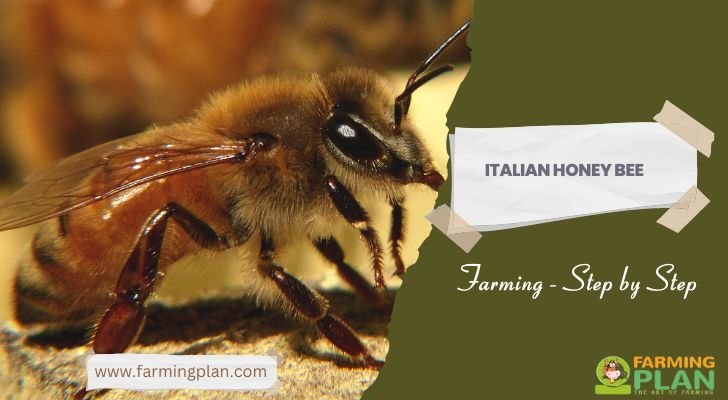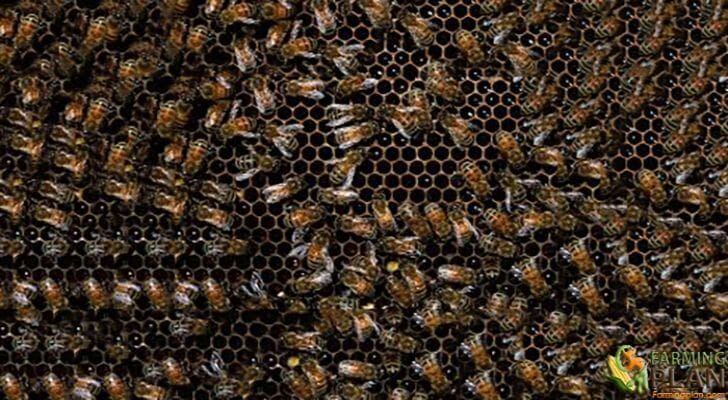Are you looking for a way to make sustainable living off the land? Bee keeping could be the perfect solution. In particular, Italian honey bee farming offers an array of benefits – from supplying delicious local honey to providing beneficial pollination services to agricultural systems. But how do you get started and what kind of investment is required? Here’s everything you need to know about working with Apis mellifera ligustica, or Italian bees, including tips on where and when to source colonies, preparation steps prior to installation day, as well as long-term management strategies. Read on for our step by step guide so that you can start your own Italian honey bee farm today!

History & Origin
Italian honey bee, also known as Apis mellifera ligustica, are one of the most popular bee species in the world. They are known for their gentle nature and are a favorite among beekeepers. The history of Italian honey bees dates back to the early 19th century when they were imported to the United States. This came as a result of a series of experiments by Lorenzo Langstroth, who is considered the father of modern beekeeping. One of the remarkable characteristics of Italian honey bees is their productivity – they can produce a large amount of honey and have a high population density. They are also known for their yellowish brown coloring and outstanding abilities when it comes to cleaning the hive. Overall, Italian honey bees have an interesting history and are a fascinating species to study.
Characteristics
The Italian honey bee is known for its attractive characteristics that make it a favorite among beekeepers. One of these traits is its gentle nature, which makes it easier to handle and work with. This species is also renowned for its excellent honey production, producing more honey than other bee species. Additionally, the Italian honey bee is capable of adapting to various environmental conditions, making it a hardy breed that can survive in different regions. With its distinctive yellow coloring and long tongue, this bee is not only visually appealing but also an efficient pollinator. Overall, the Italian honey bee’s unique blend of qualities makes it a valuable addition to any beekeeper’s hive.
Feed
If you’re looking to add some buzz to your garden, consider keeping Italian honey bees. Italian honey bees are known for being gentle, easy to manage, and for producing large amounts of honey. Not to mention, they can help with pollination in your vegetable and flower gardens. But how do you feed them? When the bees are starting out in a new hive, it’s important to provide them with a sugar syrup mixture to ensure they have enough food to build their comb and raise their young. You can also supplement their diet with pollen patties. With the right care and attention, your Italian honey bees will thrive and reward you with sweet, delicious honey.
Usage Italian honey bee
The Italian honey bee has been a popular choice for beekeepers for many years, and for good reason. Known for their gentle nature and high honey production, these bees are ideal for those just starting out in beekeeping or who want to add a new breed to their apiary. With their striking yellow bands and swift flying speed, they are also a joy to watch as they go about their daily work. Besides their impressive work ethic, Italian honey bees are also renowned for their resistance to disease, making them a reliable and hardy choice for any beekeeper. Whether you are looking to start your own hive or expand your existing one, adding Italian honey bees to your collection is a smart investment.
Special Feature
The Italian honey bee is a fascinating species that has gained popularity among beekeepers around the world. These bees are known for their gentle nature and high productivity levels, making them a favorite among honey producers. What sets the Italian honey bee apart from other species is its ability to adapt to varying climates and environments, making it a versatile option for beekeeping. Not only do these bees produce an abundant amount of delicious honey, but they also play a crucial role in pollinating crops and sustaining ecosystems. With their unique characteristics and value to the environment, it’s no wonder that the Italian honey bee has become a beloved feature in the world of beekeeping.
Benefits of Italian Honey Bee Farming
Italian honey bee farming offers many benefits that extend beyond the delicious honey they produce. For starters, these bees are known for being gentle and easy to manage, making them ideal for beekeepers. Italian honey bees also have a high level of disease resistance, reducing the need for costly and time-consuming treatments. Furthermore, they are excellent pollinators, contributing to the growth and reproduction of various plants and crops. The honey produced by Italian bees is lighter in color and has a distinct flavor, making it a popular choice among honey enthusiasts. Additionally, honey bee farming provides a valuable source of income and promotes environmental conservation. Overall, the benefits of Italian honey bee farming are numerous, making it a wise choice for both beekeepers and the environment.
Equipment Needed For Successful Italian Honey Bee
Successful Italian honey bee farming requires a few essential items to ensure healthy bees and a bountiful harvest. Firstly, you will need a beehive, which serves as the bees’ home and storage space for honey. A smoker can also be helpful to calm the bees during hive inspections. Protective gear, including a bee suit, gloves and a veil, is crucial when handling bees to avoid painful stings. Other necessary items include a hive tool for separating hive components, a bee brush for gentle removal of bees from honeycomb, and a feeder to provide the bees with supplemental food. Lastly, a honey extractor is needed for harvesting honey and preserving the hive’s health. With these key items, your Italian honey bee farming venture will be off to a sweet and successful start.
Getting Started
Farming Italian honey bees is an exciting and rewarding endeavor, but it can also be overwhelming for beginners. Although these bees are known for their docile nature and high productivity, it’s important to approach beekeeping with caution and patience. To get started, one must consider the equipment necessary for the task, such as a hive, smoker, and bee suit. Additionally, finding reputable sources for purchasing bees is crucial. Once all the necessary materials are prepared, the process of setting up the hive can begin. It’s important to remember that beekeeping requires attention to detail and consistent care in order to maintain a healthy colony. With these steps, novice beekeepers can confidently begin their journey towards raising and harvesting the delicious honey produced by Italian honey bees.
Challenges and Potential Pitfalls
Identifying potential problems before they arise is a critical skill that can help individuals, teams, and organizations avoid costly mistakes and setbacks. However, recognizing challenges and pitfalls is not always easy. It requires a combination of experience, critical thinking, and proactive planning. One of the biggest challenges is that many problems are hidden or go unnoticed until they reach a critical point. Another common issue is that people often overlook or downplay risks that are outside of their comfort zone or expertise. To overcome these challenges, it’s essential to have a systematic approach to identifying risks and to involve diverse perspectives and stakeholders in the process. By doing so, you can help ensure that your teams and organizations are better prepared to address challenges and capitalize on opportunities.
Tips To Maximize Productivity
Successful beekeeping requires a combination of dedication, knowledge, and diligence. To maximize productivity and efficiency, several strategies can be employed. First, it’s essential to know the ideal time to tend to the bees, which is during warm and sunny days. This ensures the bees are active and focused on gathering nectar, pollen, and propolis. Secondly, regular hive inspections are crucial to detect any signs of disease or unusual behavior. It’s vital to monitor the hives regularly and document any changes noticed. Finally, proper equipment maintenance is essential to ensure a smooth and efficient operation. Regularly clean and repair any broken or damaged parts of the hive equipment to promote the well-being of the colony. Adhering to these tips will help ensure successful beekeeping, maximize efficiency, and ultimately lead to a more productive experience.
FAQ
Are Italian honey bees good?
Italian honey bees (Apis mellifera ligustica) are widely cultivated and considered one of the top three varieties of honey-producing bees in the world. They are typically known for their gentle nature which makes them a popular choice among beekeepers.
What are the characteristics of Italian honey bee?
Italian honey bees (Apis mellifera ligustica) are one of the most well-known and widely used bee species in the world. They have been selectively bred for centuries to be gentle, productive, and resilient to disease. Here are some of the key characteristics that make Italian honey bee so popular among beekeepers.
Are Italian honey bees aggressive?
Yes, Italian honey bees (Apis mellifera ligustica) are known to be more defensive than other subspecies due to their strong protective instinct. It is essential for beekeepers and those working near an Italian honey bee colony to exercise caution and use appropriate protective measures when approaching colonies.
Conclusion
The Italian honey bee, Apis mellifera ligustica, is an amazing species of honeybee that has been a part of Italian culture for centuries. As a subspecies of the western honey bee, it has unique characteristics and special features which make it ideal for honey farming. When farmed properly and with due care, the Italian honey bee can bring a great deal of benefits to the beekeeper. That said, the process of beginning and maintaining an successful Italian Honey Bee farm is no small feat. It requires understanding of the specific needs of this particular subspecies as well as procuring the necessary equipment and supplies for best results. There are several potential challenges one may face when engaging in this form of bee farming as well, so it’s important to have an awareness of these before beginning on any kind of project involving Apis mellifera ligustica. With proper knowledge, preparation, and attention to detail you can experience all the benefits offered by successful Italian Honey Bee Farming!


